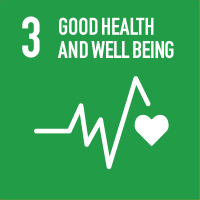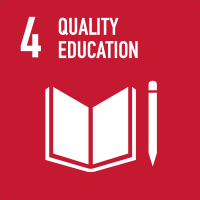Studying at the University of Verona
Here you can find information on the organisational aspects of the Programme, lecture timetables, learning activities and useful contact details for your time at the University, from enrolment to graduation.
Study Plan
The Study Plan includes all modules, teaching and learning activities that each student will need to undertake during their time at the University.
Please select your Study Plan based on your enrollment year.
1° Year
| Modules | Credits | TAF | SSD |
|---|
2° Year It will be activated in the A.Y. 2025/2026
| Modules | Credits | TAF | SSD |
|---|
3° Year It will be activated in the A.Y. 2026/2027
| Modules | Credits | TAF | SSD |
|---|
| Modules | Credits | TAF | SSD |
|---|
| Modules | Credits | TAF | SSD |
|---|
| Modules | Credits | TAF | SSD |
|---|
Legend | Type of training activity (TTA)
TAF (Type of Educational Activity) All courses and activities are classified into different types of educational activities, indicated by a letter.
Pathophysiology applied at Nursing - PATOLOGIA GENERALE (2024/2025)
Teaching code
4S000090
Teacher
Credits
2
Language
Italian
Scientific Disciplinary Sector (SSD)
MED/04 - EXPERIMENTAL MEDICINE AND PATHOPHYSIOLOGY
Period
2 SEMESTRE PROFESSIONI SANITARIE dal Jan 7, 2025 al Sep 30, 2025.
Courses Single
Not Authorized
Program
Introduction to pathology: • The pathological process as an alteration of homeostasis at the cellular and organism level. • Mechanisms of cellular homeostatic alteration: the concept of "biochemical lesion". Cellular districts where biochemical lesions occur: i) the plasmatic membrane: damage due to lipid alterations (action of phospholipases); damage due to alteration of protein function (alterations of receptors, alterations of proteins involved in the transport of molecules) ii) the intracellular organelles: mitochondria, the vacuolar system (lysosomal storage diseases) iii) the cytoplasm: accumulation of excess substances . iv) the nucleus: karyotype abnormalities. • Consequences of alterations of cellular homeostasis: "adaptation", necrosis, cellular regeneration and repair of cellular damage. • Examples of cellular adaptation: Alterations of stationary states and cellular differentiation (atrophies and hypertrophies, hyperplasias and hypoplasias; metaplasias and anaplasias). Causes of disease and mechanisms of cell damage: • General classification of the causes of disease. • Genetic causes of disease: mechanisms by which a gene mutation can cause disease (the example of cystic fibrosis). Interactions between genetic and environmental causes and multifactorial disease: the example of atherosclerosis. • Physical and chemical causes of cellular damage: i) radiation: mechanisms of production of oxygen radicals by ionizing radiation and damage by radicals; iii) alcohol damage • Healing and repair Edemas. Introduction to the immune response and immunological damage. • mechanisms of immunity and difference between innate and acquired immunity; • general characteristics of the immune response: antigen presentation, main subclasses of T lymphocytes, humoral immunity and cell-mediated immunity, the complement system. • The MHC system and transplants • Blood groups • Mechanisms of immunological damage: i) anaphylaxis; ii) mechanisms of complement activation and lytic effects of complement; iii) role of antibodies and receptors for the Fc fragment in cell damage; iv) cytotoxicity from cytotoxic T lymphocytes. Inflammation • Vascular modifications characterizing the inflammatory process: active and passive hyperemia, permeability alterations. Responsible mediators (histamine, prostaglandins, kinins) • Cells involved in inflammation. • Classification of the different types of inflammation on the basis of the prevailing characteristics: erythematous, serous, fibrinous, catarrhal, purulent, necrotic-hemorrhagic inflammation. • Differences between acute inflammation and chronic inflammation. • Cytokines and their role in regulating inflammation and repairing tissue damage. The neoplasms. • Main differences between benign and malignant tumors • Main properties of malignant neoplastic cells: characteristics of growth, invasiveness and differentiation. • Classification of tumors: i) tumors originating from epithelial cells; ii) tumors originating from mesenchymal, neuroectoderm and germ cells; iii) blood cell tumors. • Natural history of tumors in vivo: precancerous lesions, carcinomas in situ, metastasis. Metastatic preference. TNM staging. • Molecular bases of neoplastic transformation: proto-oncogenes and oncogenes, tumor suppressor genes. Mechanisms of activation of oncogenes. • Causes of tumours: physical, chemical, biological (tumour-inducing DNA and RNA viruses). • Tumor damage mechanisms: compression damage, paraneoplastic syndromes, cachexia. • Neoplasia markers and their clinical relevance
Bibliography
Didactic methods
Frontal lessons
Learning assessment procedures
Written, multiple choice and open-ended questions. Oral upon request and/or decision of the examination board.
Evaluation criteria
Evaluation of single modules with weighted average
Exam language
italiano


